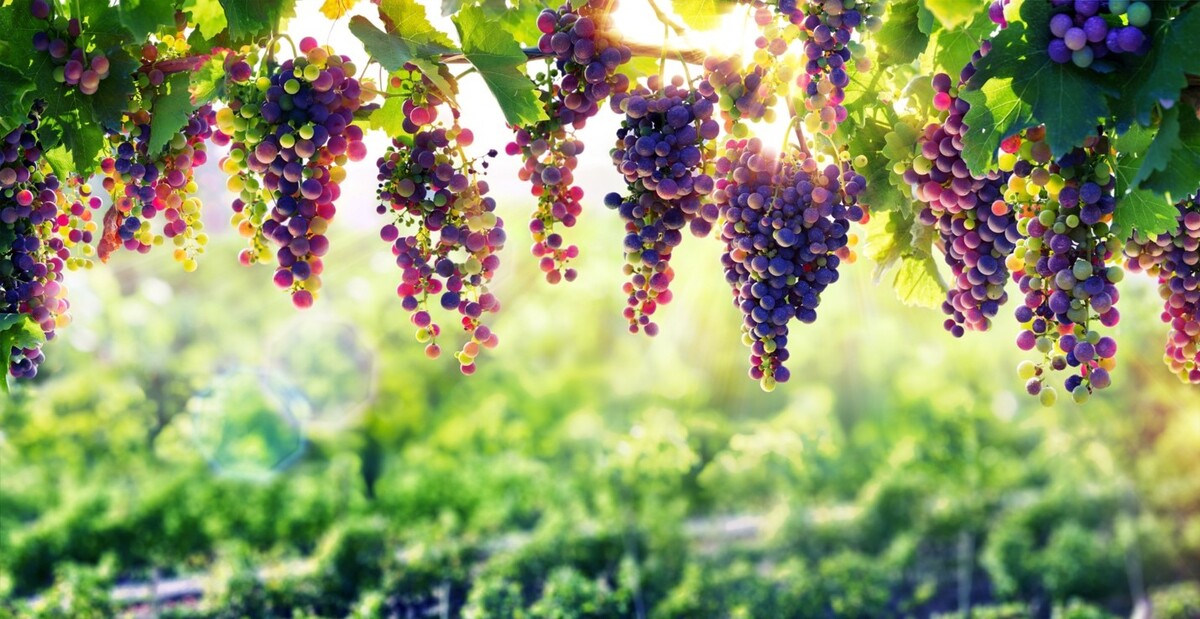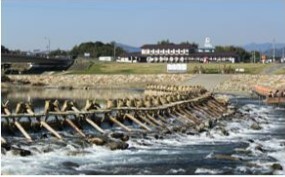
Image by Romolo Tavani/Adobe Stock
Issue
Climate change critically affects agricultural output, with fruits such as grapes notably impacted. Grapes’ color can change in warmer temperatures in both the growing and dormant seasons. Inland Yamanashi Prefecture, 100 km west of Tokyo, is realizing these effects and must adapt if grape and other fruit production are to be sustainable in the region.
Yamanashi needs support and policy measures to help its agricultural industry to adapt and be sustainable. The region has experienced declining grape production and shrinking acreage. It’s also subject to shifting and unpredictable weather, such as typhoons, flooding, and strong winds. Moreover, Japan has the world’s highest aging population rate, and the number of Japanese agriculture workers is dramatically declining.
Solution
A team of researchers reviewed climate change’s impact on Yamanashi, governmental support and policy measures, and possible strategies for adaptation. Technologies to save labor and minimize resource use are vital for sustainable agriculture, and the suggestions and recommendations include precise climate data from an AI forecasting kit that measures weather parameters using sensors, discovers diseases, and alerts farmers. Using disease-resistant cultivars adapted to climate change, plastic greenhouses, and improving international collaboration are other possibilities to sustain Yamanashi’s agricultural industry.
Overview
Climate change can dramatically impact agriculture, but agriculture is also a heavy emitter of greenhouse gas emissions. These conditions suggest the need for a combination of adaptation and mitigation. In Japan, temperature changes have already impacted crops, and grapes are among the affected. Considering the high economic importance of grapes, a team of researchers at Keio University selected them for a study focused on Yamanashi Prefecture, an inland area 100 km west of Tokyo and the country’s leading grape and wine production region.
The researchers reported a decline in grape production and summarized climate-change adaptation strategies. They also highlighted mitigation and adaptive measures provided by the Yamanashi government for farmers, such as widespread use of reliable climate and ecological data, alert systems for diseases, discovery of disease-resistant grape cultivars adapted to climate change, and improving international collaboration with other producers on climate-smart best practices.
Details
Climate extremes and uncertainties are taking a growing toll on agriculture, and advanced economies are no exception. In highly developed Japan, higher temperatures are also impacting crops nationwide. The agricultural sector is key in Yamanashi Prefecture, a vital fruit-producing region for Japan, where grapes rank first among agricultural products with a harvest of 41,800 tons, 23.93% of the total national yield. Yamanashi is the nation’s top wine region and is well known for its wine tourism. The area is also prone to swings in weather, including typhoons, flooding, and strong winds.
Japan’s temperature has risen by 1°C over the last century, impacting agriculture in many ways. In 2020, Japan declared carbon neutrality by 2050 through its Green Growth Strategy, which includes achieving zero carbon emissions from the agriculture, forestry, and fisheries industries.
Japan is also struggling with a rapidly aging population and the accompanying depletion of its agricultural workforce. Its aging rate is the highest globally (around 29%), and people employed in agriculture dropped from 5.77 million in 1980 to 2.13 million in 2020. Participation of younger people in the agriculture sector is insufficient, and the cultivable land area has shrunk from 6.09 million hectares in 1961 to 4.35 million in 2021.
Researchers at Keio University reviewed academic literature on Yamanashi. Their study was published in the journal, Rural and Regional Development. The review aimed to identify gaps in the Yamanashi government’s promotion of climate-resilient measures for grape cultivation. Their work provided considerable insights into grape cultivation and government support measures addressing the impacts of climate change on grape production. Some of their main findings were as follows.
Impact of climate change on agriculture and grape cultivation
Fruit quality is one potentially negative impact of climate change. The suitable areas for the cultivation of some fruits will probably shift to higher latitudes and altitudes.
Grapes are one of the most economically important fruits in the world. Yet high temperatures affect their production and quality during the entire lifecycle, including poor and delayed coloration, sunburned and damaged grapes, poor germination, frost damage, high sugar content, and low acidity, affecting the authentic taste of the fruit.
All these affect the selling price. Climate-smart practices and technologies for risk reduction, as recommended by FAO, are to protect the crop with greenhouses.
Declining grape production in Japan and Yamanashi
The Ministry of Agriculture, Forestry and Fisheries (MAFF) of Japan has reported a severe decline in cultivation area, harvested volume, and shipment volume since 1973. These outcomes accompany poor and delayed coloring and sunburned and cracked grapes.
The MAFF also reported the lack of successors to continue grape cultivation and the aging proportion of farmers in Yamanashi. Moreover, heavy snowfalls and hailstorms caused bacterial diseases affecting grape production, and wild birds and animals caused extra damage in Yamanashi’s mountainous areas.
Fruit farming in Japan and smart agricultural practices
Fruit farming is highly labor-intensive as most work is done manually. Innovative technologies should have a promising future and are also a solution to address labor shortages. Greenhouse horticulture is trending toward smart farming, where greenhouses are calibrated to provide accurate data readings with the help of sensors and the Internet of Things (IoT).
The application of robots in weeding, crop monitoring, yield estimation, harvesting, and in-field transportation has potential and shortfalls that must be addressed. Artificial intelligence is deployed to transform data into information that can be helpful to fruit growers to make informed decisions.
Adaptation strategies for grapes to climate change
Short-term adaptations include soil, canopy, irrigation, harvest, and post-harvest management. Long-term adaptations are vineyard design, plant material, farm strategy, and site selection. There are positive and negative aspects to each of the adaptation strategies. Therefore, the study recommended a mix of short and long-term tactics.
Grapes’ adaptation to climate change can be addressed by avoiding and tolerating high temperatures through production technology, implementing plastic greenhouses and girdling, cultivar selection, and breeding adapted to warming. A phenological shift or the use of a superior-colored cultivar would be effective in the long-term adaptation measures.
The movement of production areas from sloping lands to higher altitudes and delaying grapevine ripening are good strategies.
Support measures for grape cultivation from the Yamanashi government
The Yamanashi government introduced consultation, loans, and subsidies to help new farmers. These help strengthen the brand, the production base for high-quality fruits, the response to disasters and pests, and in securing and cultivating business leaders and promoting the so-called sixth industrialization. The Yamanashi Fruit Tree Experiment Station developed new grape varieties in response to the damages caused by typhoons and resistance to high temperatures.
Another smart agricultural practice is the AI forecasting kit developed by the The Institute of Enology and Viticulture, University of Yamanashi in collaboration with local wineries. The kit is used to predict agricultural disease outbreaks. This approach has been effective in controlling pests and using minimum pesticides. Drones are being used to spray pesticides on grapes.
Recommendations
From their literature review, the researchers reported that existing climate-smart technology-oriented practices should be widespread to achieve better forecasting. It is critical to widely put climate change-related adaptation strategies into the solution and make further efforts to promote smart agriculture (e.g., AI, IoT, robots).
Developing grape varieties that better meet consumer demands, high-quality fruits, and the Yamanashi brand is essential. The huge morphological and physiological differences in grape cultivars permit cultivation over a wider climate range.




